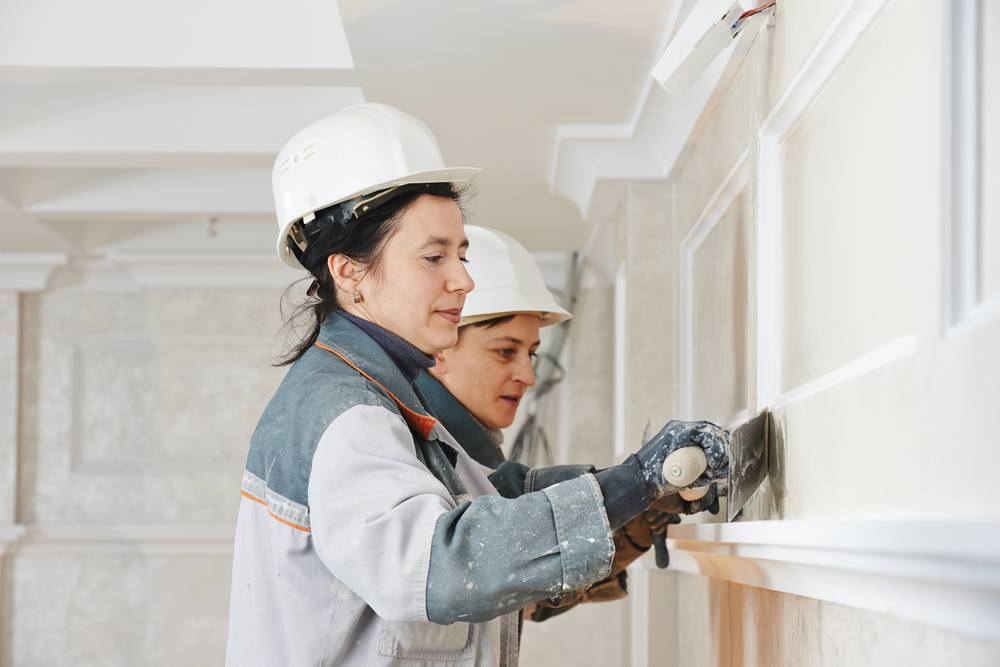There are several ways to enhance the aesthetics of a building. One of the ways to achieve this is by adding plaster to the walls or ceiling. It provides smoothness to the surface and also protects the wall from any kind of damage. A professional plasterer will spread the wet plaster over the bricks and then use the right equipment to smoothen the surface. It creates a seamless surface for painting.
The wet plaster that is spread on the surface should not be more than 0.3 cm. But in case the base surface is uneven, then the thickness of the plastering layer should be more than .3cm. If the walls are made of different sized stones, then the plasterer will increase the number of coats.
Also, the plasterer will ensure that the first layer completely dries out before applying the second coat, as the wet surface may sag, and if not dried properly, the final coat will not be smooth.
Types of plaster finishes:
There are different types of plastering finishing, and a plastering expert will have the expertise in this. The common types of plaster finishing are:
- Roughcast finishing
- Sand faced finishing
- Smooth cast finishing
- Pebble dash finishing
- Scrapped finishing
- Depeter finishing
- Textured finishing
To get the desired texture of plaster finish, the plastering contractor has to prepare the right mix. Let’s have a detailed overview of the same:
Roughcast finishing:
The final look of this plaster finish has coarse aggregate along with cement and sand. The right ratio is 1:1.5:3, and the size of coarse aggregate is 3mm to 12 mm. It can be done by a professional plasterer only.
Sand faced finishing:
For this, the plastering expert will have two coats of plaster. The first coat is 12 mm thick, and the right ratio is 1:4. This plastering finish is allowed to cure for 7 days.
After this, an 8mm thick layer is applied, and for this, the cement and sand ratio are 1:1. Now the surface is levelled using a sponge. After this, the screened sand is applied to the surface with the help of a wooden float.
Pebbledash finish:
This plastering finishing is 12 mm thick. The cement and sand are in the ratio of 1:3. After the plastering, pebbles of 10mm to 20 mm are added to the plaster surface.
Smooth cast finish:
This is a common plastering finishing, in which the plastering contractor will use cement and sand in the ratio of 1:3. A wooden float is used to apply this.
Scrapped Plaster Finish:
To get this finishing, the plasterer will apply the final coat, which is 6 to 12mm thick, thereby allowing it to dry. This surface is less prone to cracks.
Demeter Plaster Finish:
The plastering method is the same as pebble dash finishing, but instead of pebbles, gravels or flints are used. You can use this pestering method for your outdoor.
External Rendering: the best way to enhance the aesthetics:
Marley constructing a building without adding the right type of plaster will not be an eye-pleasing sight. We have discussed the common type of plastering finishing that you can opt for. And to achieve the right finishing, you need to hire the best plastering expert. Plastering expert know about creating the right mix of cement and sand and using the right technique.
Make sure that you hire only an experienced contractor for this work. Using the right type of plastering finishing will enhance the value of the property, so make sure that you have the best plasterer working for you.







